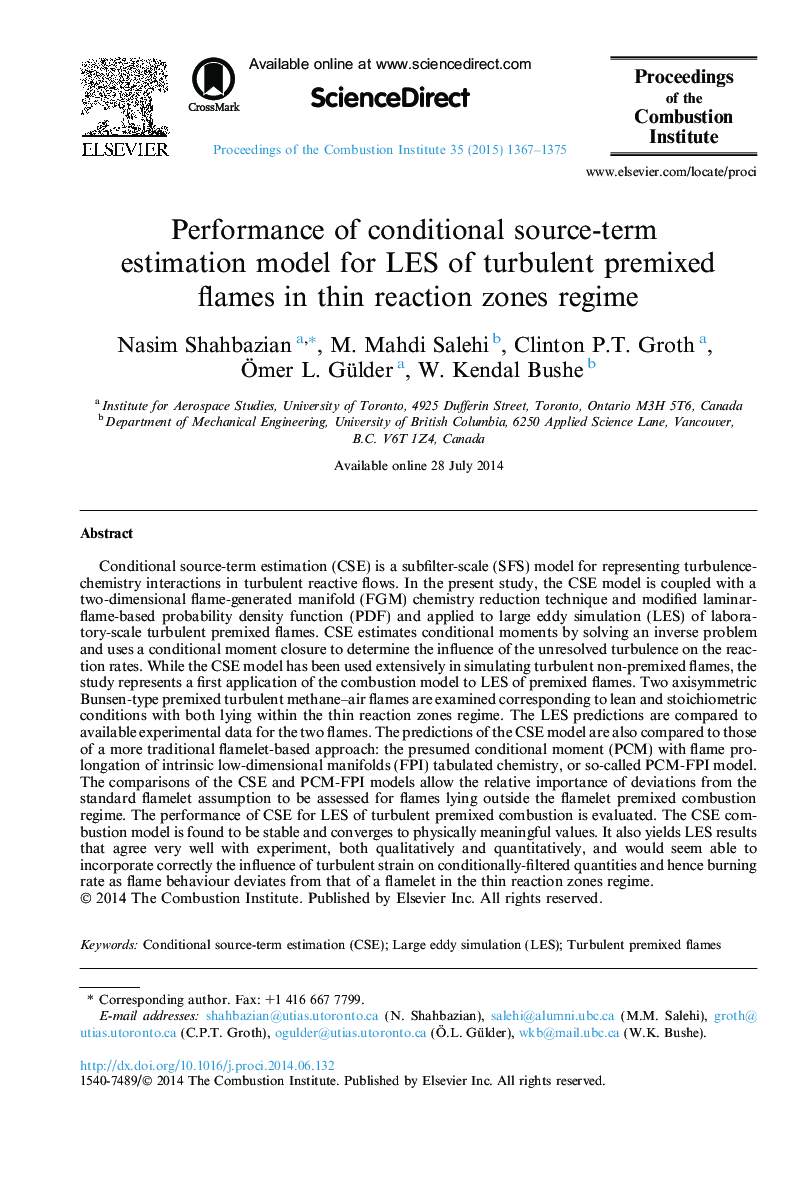| Article ID | Journal | Published Year | Pages | File Type |
|---|---|---|---|---|
| 6679222 | Proceedings of the Combustion Institute | 2015 | 9 Pages |
Abstract
Conditional source-term estimation (CSE) is a subfilter-scale (SFS) model for representing turbulence-chemistry interactions in turbulent reactive flows. In the present study, the CSE model is coupled with a two-dimensional flame-generated manifold (FGM) chemistry reduction technique and modified laminar-flame-based probability density function (PDF) and applied to large eddy simulation (LES) of laboratory-scale turbulent premixed flames. CSE estimates conditional moments by solving an inverse problem and uses a conditional moment closure to determine the influence of the unresolved turbulence on the reaction rates. While the CSE model has been used extensively in simulating turbulent non-premixed flames, the study represents a first application of the combustion model to LES of premixed flames. Two axisymmetric Bunsen-type premixed turbulent methane-air flames are examined corresponding to lean and stoichiometric conditions with both lying within the thin reaction zones regime. The LES predictions are compared to available experimental data for the two flames. The predictions of the CSE model are also compared to those of a more traditional flamelet-based approach: the presumed conditional moment (PCM) with flame prolongation of intrinsic low-dimensional manifolds (FPI) tabulated chemistry, or so-called PCM-FPI model. The comparisons of the CSE and PCM-FPI models allow the relative importance of deviations from the standard flamelet assumption to be assessed for flames lying outside the flamelet premixed combustion regime. The performance of CSE for LES of turbulent premixed combustion is evaluated. The CSE combustion model is found to be stable and converges to physically meaningful values. It also yields LES results that agree very well with experiment, both qualitatively and quantitatively, and would seem able to incorporate correctly the influence of turbulent strain on conditionally-filtered quantities and hence burning rate as flame behaviour deviates from that of a flamelet in the thin reaction zones regime.
Related Topics
Physical Sciences and Engineering
Chemical Engineering
Chemical Engineering (General)
Authors
Nasim Shahbazian, M. Mahdi Salehi, Clinton P.T. Groth, Ãmer L. Gülder, W. Kendal Bushe,
